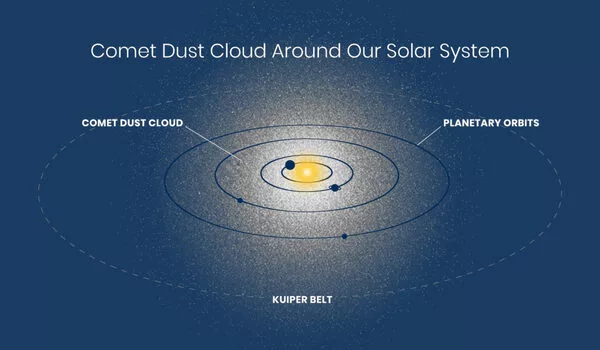The James Webb Space Telescope (Webb) has used high-precision techniques to study the Chariklo ring system. Chariklo is a minor planet in our Solar System that is believed to have two rings of ice and rock particles encircling it. The discovery of these rings was a surprise to astronomers, as Chariklo is the smallest object known to have rings, and the observation by Webb with its advanced capabilities has provided new insights into the formation and evolution of planetary ring systems.
In a high-precision observational feat, scientists used a new technique with NASA’s James Webb Space Telescope to capture the starlight shadows cast by Chariklo’s thin rings. Chariklo is an icy, small body that is the largest of the known Centaur population and is located more than 2 billion miles beyond Saturn’s orbit. Chariklo is only 160 miles (250 kilometers) in diameter, or ~51 times smaller than Earth, and its rings orbit at a distance of about 250 miles (400 kilometers) from the body’s center.
Members of the science team observing Chariklo were asked to tell us more about this unusual system, the occultation technique, and what they learned from their Webb observations.
We’ll see if we can cleanly resolve the two rings as we dig deeper into the data. We will investigate the thickness of rings, the sizes and colors of ring particles, and other aspects based on the shapes of occultation light curves.
Santos-Sanz
Felipe Braga-Ribas and colleagues discovered a system of two thin rings on Chariklo using ground-based telescopes in 2013. Such rings were only expected to form around large planets like Jupiter and Neptune. The astronomers had been watching a star as Chariklo passed in front of it, as predicted, blocking the starlight. This is referred to as an occultation by astronomers. To their surprise, the star blinked off and on twice before disappearing behind Chariklo, and then double-blinked once more when it reappeared. Two thin rings, the first rings ever detected around a small solar system object, were responsible for the blinking.
Pablo Santos-Sanz of the Instituto de Astrofsica de Andaluca in Granada, Spain, has an approved “Target of Opportunity” program (program 1271) to attempt an occultation observation as part of Webb’s solar system Guaranteed Time Observations (GTO), which is led by Heidi Hammel of the Association of Universities for Research in Astronomy. We discovered, by chance, that Chariklo was on track for an occultation event in October 2022. This was Webb’s first attempt at stellar occultation. It took a lot of effort to identify and refine the predictions for this unusual event.

On October 18, we used Webb’s Near-Infrared Camera (NIRCam) instrument to closely monitor the star Gaia DR3 6873519665992128512 for tell-tale brightness dips indicating an occultation had occurred. The shadows cast by Chariklo’s rings were clearly detected, demonstrating a novel way of using Webb to investigate solar system objects. The star shadow cast by Chariklo itself moved just out of Webb’s line of sight. This appulse (the technical term for a close pass with no occultation) occurred exactly as predicted after the previous Webb course trajectory maneuver.
The observations were successful, according to the Webb occultation light curve, which is a graph of an object’s brightness over time. The rings were precisely captured as predicted. The occultation light curves will reveal fascinating new information about Chariklo’s rings. Santos-Sanz elaborated: “We’ll see if we can cleanly resolve the two rings as we dig deeper into the data. We will investigate the thickness of rings, the sizes and colors of ring particles, and other aspects based on the shapes of occultation light curves. We hope to learn why this small body has rings at all, and possibly detect new, fainter rings.”
The rings are most likely made up of small water ice particles mixed with dark material, debris from an icy body that collided with Chariklo in the past. Because Chariklo is too small and too far away for even Webb to directly image the rings separated from the main body, occultations are the only tool available to characterize the rings on their own.





